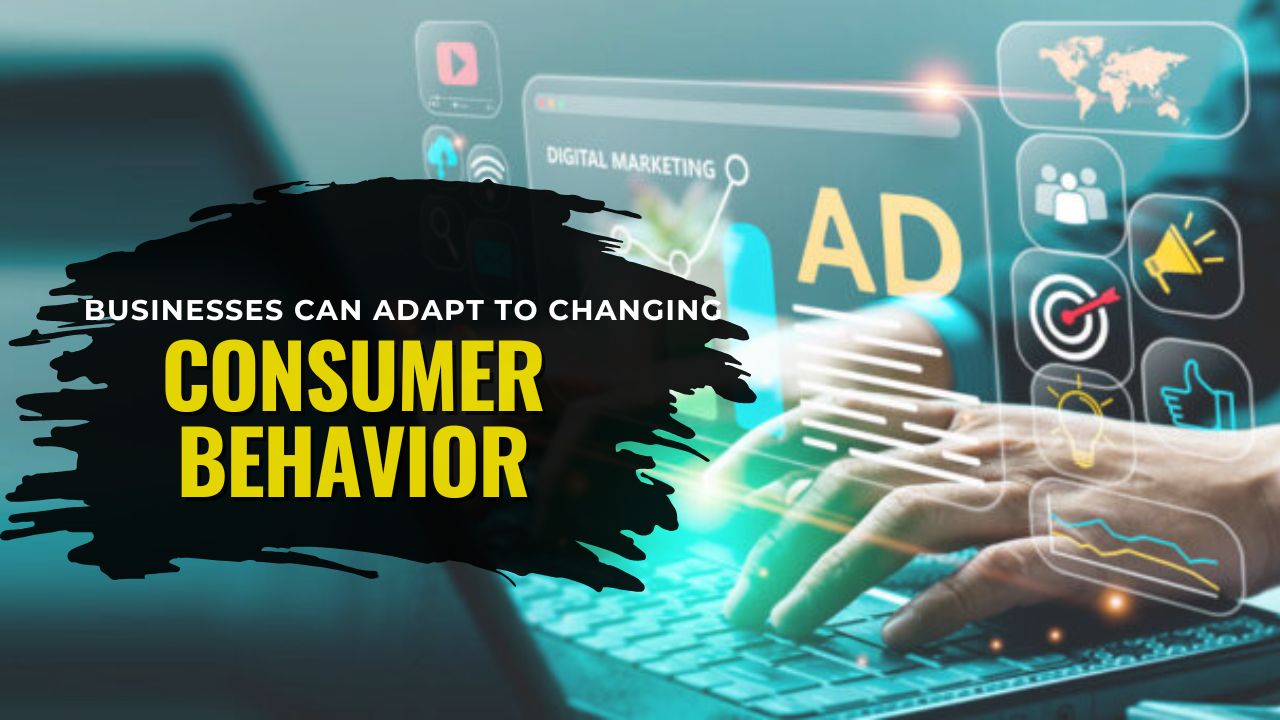Consumer behavior is evolving rapidly. From AI-shaped search and zero-click results, to social commerce, buy-now-pay-later (BNPL), and tap-to-pay, the expectations of today’s customers are higher than ever.
For local businesses, succeeding means showing up in the right moments, removing friction at checkout, building trust, and weaving digital and physical experiences together.
This article is a full, data-driven guide (around 1,200 words) on how local businesses can adapt—step by step—with tactics, metrics, real world trends, and actionable plans (including a table and 3 FAQs).
Own the “Near Me” Moment with Local SEO & AI-Aware Content
Why It Matters
Local intent is surging—these are high-intent searches, and consumers expect quick answers, store hours, inventory status, reviews, and directions.
At the same time, AI Overviews (summary boxes) are driving zero-click traffic higher, meaning fewer users click through to websites.
What to Do
- Fully optimize your business listing (name, address, phone, categories, attributes, photos, services, business hours).
- Publish hyperlocal pages or blog posts (e.g. “best cafe in [Neighborhood]”) that mirror how people talk.
- Include FAQ schema and structured data (LocalBusiness, product availability) so your site can feed into AI Overviews.
- Keep your listing updated (e.g. holiday or special hours, stock level alerts, photos).
Turn Reviews & Customer Engagement into Conversion Drivers
Why It Matters
Consumers heavily rely on reviews to choose local businesses. But not just the presence of reviews—the responsiveness to feedback is a differentiator in trust.
What to Do
- Prompt avid customers to leave reviews shortly after a visit or purchase (e.g. via email/SMS).
- Respond to all reviews, positive and negative, within 24 hours. Address concerns, thank customers, and invite them back.
- Display recent, authentic photos from customers to build social proof.
Sell Where People Scroll: Social Commerce (e.g. TikTok Shop)
Why It Matters
Social platforms have become full-funnel shopping environments. Many users discover, evaluate, and purchase inside the same app. Local sellers can leverage this to merge digital discovery with in-person pickup.
What to Do
- Launch a social shop channel (e.g. TikTok Shop) for your best-selling SKUs.
- Create short, compelling demo videos (30–45 seconds) addressing typical objections (fit, packaging, warranty).
- Run live selling sessions with local pickup promotions (“order now, pick up today”).
- Use local targeting and partner with creators in your city or neighborhood.
Remove Payment Friction: Tap-to-Pay, Wallets & BNPL
Why It Matters
Consumers expect seamless, fast payment options—whether in person or online. Delays, clunky checkout, or forcing manual card entry can kill conversions.
What to Do
- Enable contactless payment (NFC terminals or “tap to phone”).
- Integrate mobile wallets (Apple Pay, Google Pay).
- Offer BNPL options for higher ticket items (while monitoring risk).
- Display logos or badges of accepted payment methods on your site, social, and storefront to instill trust.
Build Loyalty & Leverage First-Party Data
Why It Matters
Relying solely on third-party channels is risky. Instead, focus on loyalty and first-party data: who your customers are, what they buy, how often, so you can deliver personalized offers and keep them coming back.
What to Do
- Implement a lightweight loyalty program (points, rewards, punch cards, membership perks).
- Collect consented data: purchase histories, preferences, birthday dates.
- Trigger timely offers (e.g. replacement reminders, service renewals) or local promos based on behavior.
Design a Seamless Omnichannel Journey
Why It Matters
The modern customer blends online and offline journeys: browsing on their phone, buying in store, returning via mail, or reverse. Winning is about making all channels act as one.
What to Do
- Sync inventory so your store listing, website, and platform pages all reflect accurate availability (in stock, limited, out of stock).
- Promote BOPIS / curbside pickup with clearly displayed pickup windows.
- Train staff on unified customer profiles: loyalty details, cross-channel returns, and consistent communication.
Launch Promotion Campaigns Around Real-Time Triggers
Why It Matters
Consumer behavior responds to calendar, weather, events, and cultural moments. Agile local campaigns convert better than blanket discounts.
What to Do
- Develop a promo calendar based on local holidays, events, festivals, seasonality, or even weather shifts.
- Deploy limited time bundles, pop-ups, or creator collabs ahead of these moments.
- Use short video content or livestreams to drive same-day foot traffic or pickup-based sales.
Price with Clarity & Drive Perceived Value
Why It Matters
In a crowded market, competing on price alone is risky. Consumers respond to clarity, speed, and value more than just the lowest number.
What to Do
- Offer good / better / best bundle tiers, membership discounts, or service packages.
- Be transparent with pricing and any potential add-ons.
- Emphasize fulfillment speed (e.g. “pick up in 2 hours”) as part of the value proposition.
Make Your Store Experience a Marketing Channel
Why It Matters
Physical stores are not just transactional—they’re experiential hubs. When your space is visually compelling or hosts events, it becomes content you can promote online.
What to Do
- Host in-store workshops, product demos, or neighborhood events.
- Gather opt-ins in person (email, SMS) during events.
- Live-stream snippets or “moments” from the store to social channels, driving digital followers and local traffic.
Operate in Weekly Sprints, Not Quarter by Quarter
Why It Matters
Consumer trends, algorithm updates, and platform shifts evolve rapidly. Adapting in short cycles gives you the agility to capitalize on emerging behaviors.
What to Do
- Track and analyze key metrics weekly: listing impressions, map rankings, review volume, social GMV, payment method usage, opt-ins.
- Rebalance your marketing and operations every two weeks (e.g. more budget to social commerce if ROI is strong).
- Continuously experiment small changes rather than waiting for a big overhaul.
Action Plan – Priorities & Metrics
| Priority | Key Action | Metric to Track | Target / Goal |
|---|---|---|---|
| Local Visibility | Fully enrich business listing & publish hyperlocal content | Map Pack impressions, calls, directions | Top 3 in local map pack |
| Reviews | Solicit reviews & respond promptly | Response rate, average rating, review count | 90%+ response rate, rating ≥ 4.5 |
| Social Commerce | Launch social shop & promote local pickup | GMV from social, AOV, pickup rate | Break even within first month, positive margin |
| Payment | Enable contactless, wallets, BNPL | Checkout conversion, drop-off rate | Reduce drop-off by 20% |
| Loyalty / Data | Create loyalty and data flows | Repeat purchase rate, opt-in rate, CLV | Increase repeat rate by 15% |
| Omnichannel | Sync inventory & offer BOPIS | In-stock accuracy, pickup usage | > 90% availability accuracy |
| Promo Campaigns | Calendar-based local promotions | Promo conversion, foot traffic lift | Foot traffic lift of 10–20% |
| Pricing & Bundles | Tiered offers & transparent value | Bundle uptake rate, margin | Healthy margin on bundles |
| Store Experience | Events / experiences + content | Opt-ins from events, social reach | 100+ new opt-ins per event |
| Agile Iteration | Weekly measurement & adjustments | KPI shifts, ROI per channel | Dynamic allocation to highest ROI |
The modern consumer looks for immediacy, convenience, trust, and seamless experiences.
For local businesses, the path forward lies in owning the “near me” moment, selling inside social platforms, removing checkout friction, and building deep relationships via loyalty and personalization.
By working in short sprints, monitoring performance weekly, investing in what’s working, and iterating fast, you can meet customers where they are—and convert their next “near me” moment into real, sustained local revenue.
FAQs
What’s the fastest change that local businesses can make for immediate impact?
Complete and enrich your local business listing (name, categories, hours, photos, attributes) and set up a review-ask + reply process. This usually boosts your Map Pack visibility, calls, and direction requests in a few weeks, especially when complemented by local content and FAQs.
Is it really worth joining social commerce platforms like TikTok Shop?
Yes—if your products are visual or demo-friendly. Social commerce allows customers to discover and buy in one place. Starting with your top SKUs, you can test short video ads or live selling tied to pickup options, and scale based on actual performance.
How should I balance adopting new tools with cost and risk?
Adopt new technologies slowly — start with your highest-leverage, low-cost bets (e.g. contactless payments, GBP optimization, loyalty, review response). Monitor performance before committing more. Use lean tests and guard against overcommitting. If an experiment fails, you pivot quickly.

